Principles of Design
Movement
The illusion of movement results from apparent instability in the image.
Techniques to achieve this illusion include the following:
- Adding a blurred background to the image
- Directing the eye in a certain direction (with arrows that point the way or a series of lines or dots that become progressively larger or smaller)
- Using an image of something moving as opposed to something stationary
Anticipated and Blurry Movement
Live figures portrayed in unstable body positions cause the viewer to feel that motion is imminent. This heightens the feeling of motion.
 |
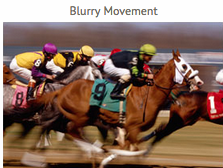 |
When a figure moves past us at very high speeds, we perceive that figure as somewhat blurry. We interpret blurry or indistinct outlines as conveying motion. Automobile manufacturers use this technique in still photos to imply the speed of their cars.
Multiple Images
Showing multiple overlapping images gives the impression of motion. We can see that the person or figure has moved through a series of poses.
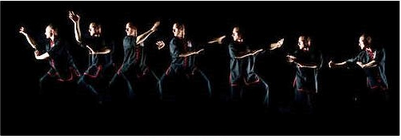
Optical Movement
| In optical movement, the eye is forced around the picture to see all the various elements. Optical movement can be enhanced by curved forms that keep the eyes moving in a circular pattern throughout the picture, as in this circular flow chart. Counting from one to nine and the progression of colour through the rainbow generates optical movement. The Audi image uses arrows to move the viewer's attention from left to right. |
 |
circular pattern throughout the picture, as in this circular flow chart.
Counting from one to nine and the progression of colour through the rainbow generates optical movement.
The Audi image uses arrows to move the viewer's attention from left to right.
Michelangelo's reaching fingers illustrate movement and direction.

Optical Illusions
For some fun optical illusions and the explanation of why we interpret them the way we do, visit LotoLab.
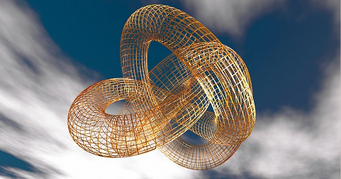 |
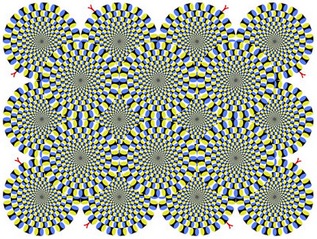 |
Rhythm and Movement
Rhythm refers to the way our eyes move throughout a picture. Some pictures move the viewer throughout in a connected, flowing way, much like a slow, stately rhythm in music. Other
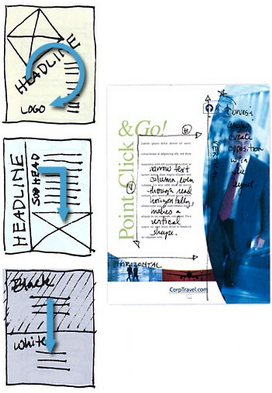
pictures move the viewer from one place to another in abrupt, dynamic ways, much like fast, staccato rhythm in music. This gives the impression of movement.
The key to establishing rhythm in design is to understand the difference between repetition and variation.
- Repetition occurs when visual elements are repeated with consistency.
- Variation occurs when aspects of the visual elements in the design change. For example, the designer might change the size, colour, shape, spacing, position, or visual weight.
Rhythm is produced when elements in a composition are repeated. Related or flowing circular elements give a connected and flowing rhythm to a picture. Unrelated or jagged elements result in a more unsettling but dynamic picture.
Repetition establishes rhythm when visual elements are repeated more or less consistently. Variation establishes rhythm when changes are made in the comparative sizes, shape, or quantities of visual elements. Repetition without variation can become boring. Consider the arrows in the Audi advertisement again. They are far more effective at implying movement than they would be if they were identical arrows repeated three times.